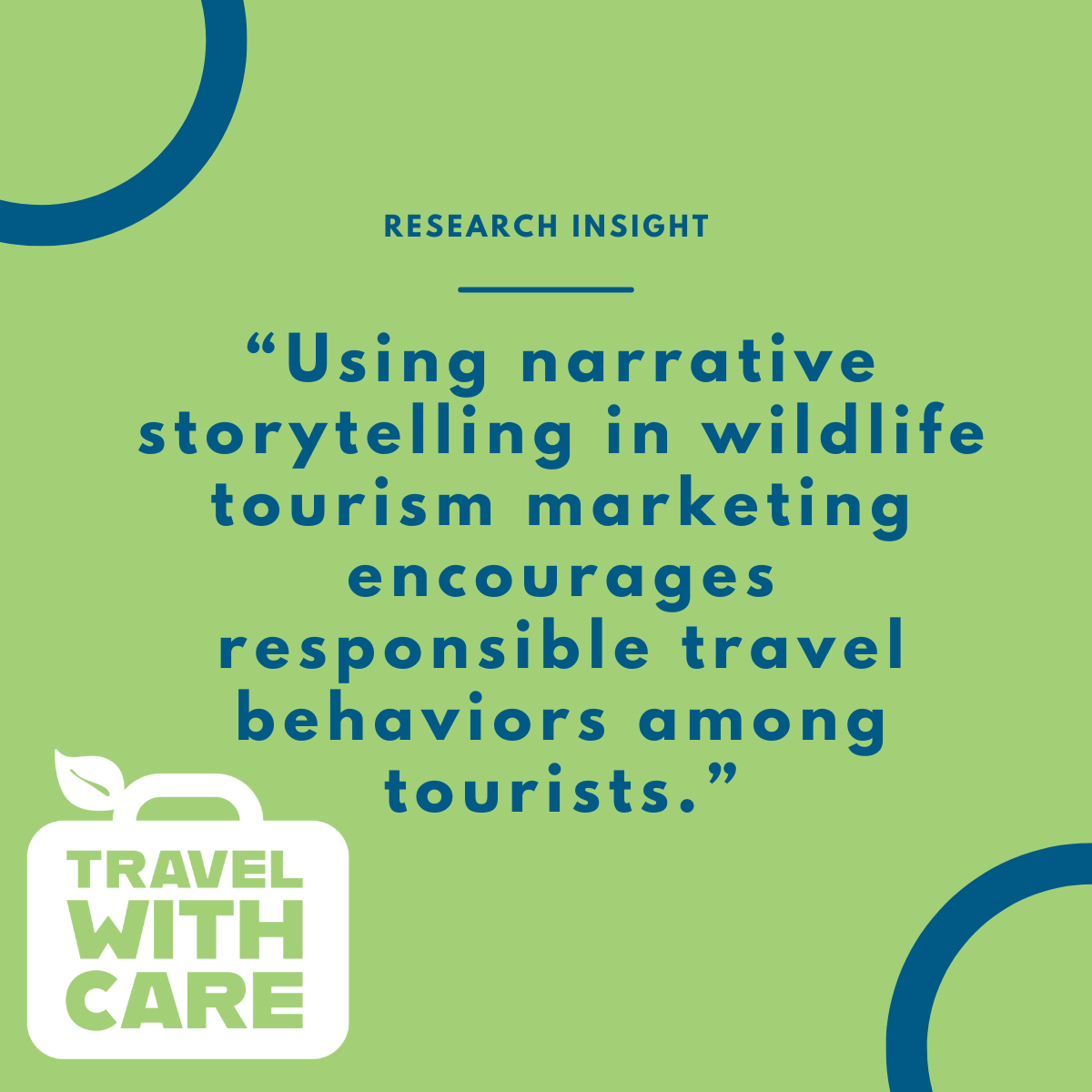
25 Sep Environmental communication using narrative storytelling
Using narrative storytelling, impactful visuals, and message framing in wildlife tourism marketing fosters emotional connections, raises awareness about environmental conservation, and encourages responsible travel behaviors among tourists.
A picture may be worth a thousand words, but good stories and compelling information can leave a lasting impression. Recent research on wildlife tourism in China highlights the unique opportunities to communicate environmental values that can lead to increased willingness to pay and responsible travel choices among tourists (Dai et al., 2024). The article highlights that storytelling text strongly resonates with potential visitors. Additionally, the use of impactful visuals can evoke emotions related to environmental conservation and the beauty of wildlife.
The approach in using impactful visuals and good storytelling can communicate awareness about the importance of protecting natural habitats while promoting tourism. DMOs should foster empathy towards nature through intentional marketing strategies. This could involve sharing stories of local wildlife and the challenges they may face. Message framing can influence consumer attitudes. DMOs can experiment with different framing strategies, for example, highlighting the benefits of sustainable tourism versus the consequences of neglecting environmental issues to see which resonates best with their specific target audience.
The study can be found here.
Dai, S., Zhang, P., Li, S., & Xu, H. (2024). Environmental communication in wildlife tourism: Narrative framing and emotion effect on the willingness to pay for a destination. Journal of Sustainable Tourism, 1–17. https://doi.org/10.1080/09669582.2024.2382432

